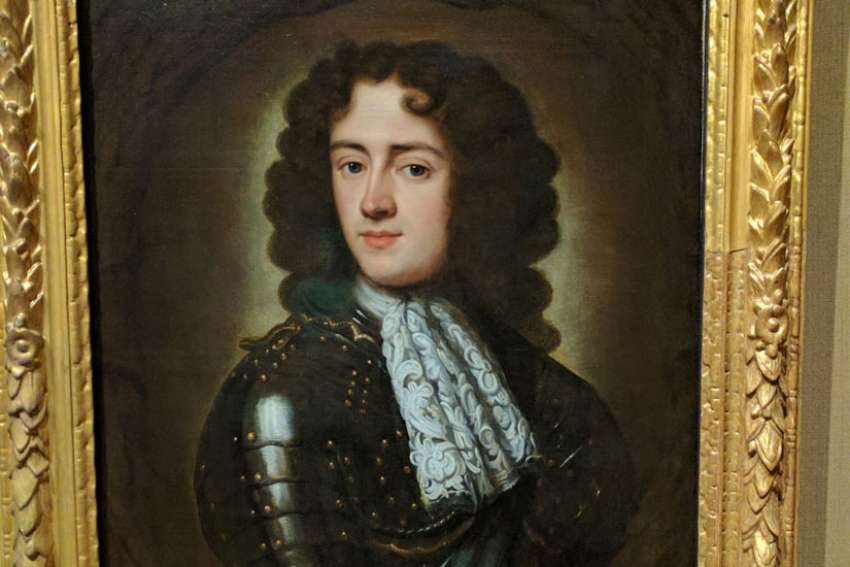There is always so much to see and learn in London, or as the great writer and moralist Samuel Johnson once said, “When a man is tired of London, he is tired of life.” Indeed, few places are so steeped in history, culture and multiculturalism as London.
One afternoon with my son, Aidan, also a history buff, we spent several hours in the famed Tower of London, a thousand-year-old palace that morphed into a jail and de facto torture chamber during the Middle Ages. Famously, it is the place where Henry VIII’s Anne Boleyn lost her head and where two young princes were killed, paving the way for Richard III.
Today, it is a UNESCO World Heritage Site teeming with tourists and filled with stories told by the Beefeaters, the guardians of the Tower, who patrol and give tours every half hour.
Our Beefeater told a lesser known story involving James Scott, 1st Duke of Monmouth, who died in the Tower on July 15, 1685. His story begins several weeks before his birth in 1649 when his grandfather, Charles I, was beheaded and England briefly shed the monarchy.
During the civil war that led to the execution of Charles, his sons fled in exile to the continent where the two followed decidedly different paths. The elder, also named Charles, fathered 14 illegitimate children with various mistresses, while James married, settled down and later converted to Catholicism.
By 1660, republican rule was over in England, the monarchy was restored and the crown placed upon Charles II. He then married a Portuguese princess, who was Catholic, and ruled for 25 years without a legitimate heir.
The crown passed to his brother, James II, in 1685 and here is where the Duke of Monmouth story picks up. Despite being illegitimate, Monmouth being the eldest child of Charles II and a Protestant, figured he had a right to the crown so he tried to seize it from his Catholic uncle.
The rebellion was easily crushed after the battle of Sedgemoor in 1685 and Monmouth was imprisoned in the Tower and sentenced to death for treason. The widow of Charles II pleaded with King James II to spare his nephew, but to no avail.
As Monmouth was led to the chopping block, our Beefeater recounted, the duke gave the ham-fisted and drunk executioner, Jack Ketch, six guineas and said: “Do not hack me as you did my Lord Russell. I have heard that you struck him three or four times. My servant will give you some more gold if you do the work well.”
There was no further payment as the notorious Ketch took five whacks of the axe, according to the Beefeater, “and then he pulled out a butcher’s knife to finish the job and severe the head from the body.”
All rather gross, but it goes further. As they were about to toss Monmouth’s headless body into a grave, someone realized he was still the son of a king and they needed a portrait. So, the Tower’s doctor was summoned and he sewed Monmouth’s head back on and a painter was called in to do the portrait of a propped-up corpse.
“To this day,” the Beefeater said, “that picture hangs in the National Portrait Gallery. I’ve not seen it, but I’m told Monmouth has a detached look on his face!” He added that Monmouth holds the distinction of being the only body buried beneath the Tower chapel with the head attached, albeit sewn on.
I turned to my son: “Now that we’ve got the head’s up, let’s go find that portrait to see if it’s true or just some story.”
And Aidan replied, “Even if it’s not entirely true, the story is sew fascinating!”
After finishing our tour of the Tower, including seeing the crown jewels, we hopped on the Tube and were at the National Portrait Gallery in 20 minutes. Ten minutes later we found the Monmouth portrait.
The artist did a remarkable job. One cannot tell the subject was dead at the time and the synopsis beside the painting makes no mention of the story, either.
Only in England can you find such tales. You just need to know where to look. Now, some question the Beefeaters’ story and say the Monmouth painting in the National Portrait Gallery predates his death, but who am I to question the Queen’s own bodyguards?
Anyway, three years after Monmouth’s execution, James II fathered a son and heir. Protestants feared a Catholic dynasty and nobles rallied. The last Catholic monarch fled in exile with the arrival of William of Orange and his wife Mary — who just so happened to be James II’s Protestant daughter from his first marriage. As I said, only in England.
(Brehl is a writer in Port Credit, Ont., and can be reached at bob@abc2.ca or @bbrehl on Twitter.)


